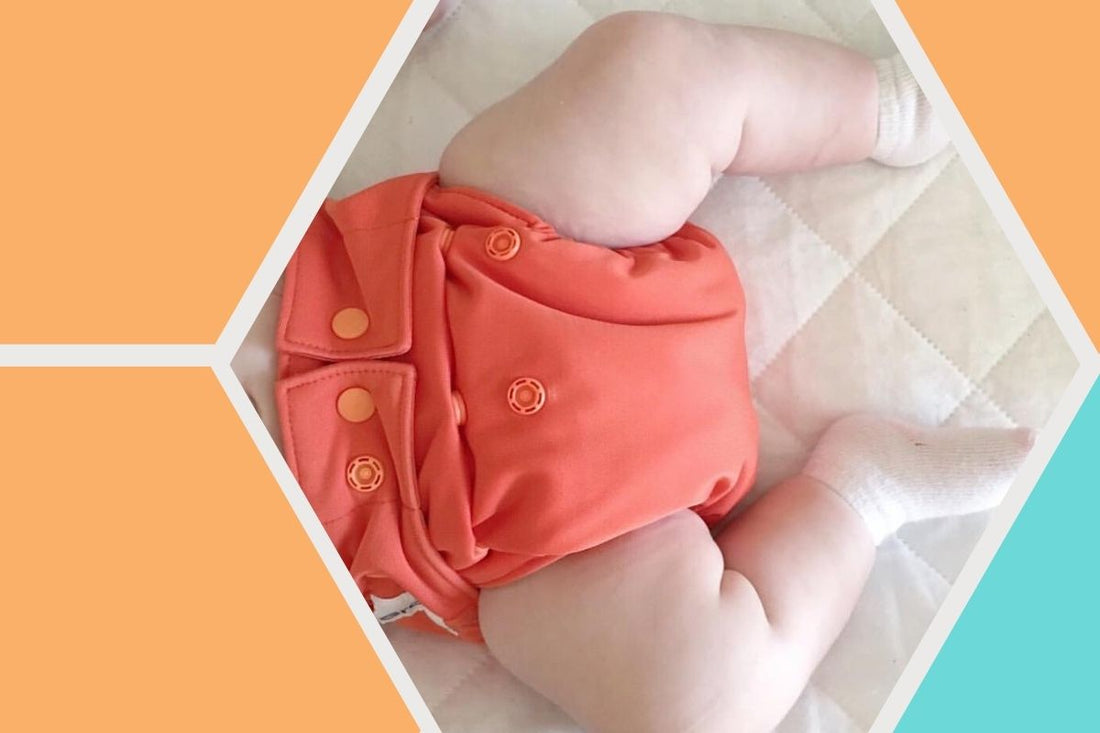
The Pros and Cons of Cloth Diapers
Share
Have you ever considered using cloth diapers? 9 out of 10 American families use disposable diapers when raising children. It’s understandable why disposable diapers are the popular choice — they are more convenient, easier to find, don’t require a large initial investment, and don’t need to be laundered as cloth diapers do. At the same time, cloth diapers offer surprising benefits to the environment and the health of little ones. If you are stuck between cloth diapers and disposable alternatives, we hope you find this list of cloth diaper pros and cons helpful when making your decision.
Cloth diapers help reduce your carbon footprint
Around 27.4 billion diapers find their way to landfills every year. Since disposable diapers are made up of plastic fibers, they can take almost 500 years to break down. Plus, disposable diapers require significantly more resources and materials to manufacture. In a year’s time, diaper manufacturers go through 3.4 billion gallons of fuel and over 200,000 trees are cut down. Cloth diapers are produced with fewer natural resources, reducing your family’s carbon footprint during a child’s diaper years.
Cloth diapers may be more comfortable
While it’s difficult to tell whether babies are uncomfortable in one diaper or another, there’s a good chance that soft cloth feels cozier against a baby’s skin. Plus, they are often more breathable and lightweight. A baby won’t protest when dressed in a disposable diaper, but if you’re concerned about providing an extra snuggly feeling, cloth diapers could be the way to go.
Cloth diapers can save you money
The upfront costs of disposable diapers are cheaper than investing in cloth diapers from the start. However, the cost of disposable diapers adds up over the years. Cloth diapers are a bigger investment up front, but can save you significantly more money over time. After that initial investment, you only need occasional replacements of cloth diapers. Even so, it’s understandable to sacrifice the long-term costs for smaller costs at the start. Parents should choose the option that works best for their financial situation.
Cloth diapers might encourage kids to become potty trained earlier
When children wear disposable diapers, the superabsorbent polymers keep the diaper area drier longer. On the other hand, cloth diapers become uncomfortably wet more quickly. This can actually encourage little ones to begin using the bathroom by themselves at a younger age. There isn’t much of an incentive for kids to wean off of disposable diapers if they feel dry most of the time while wearing them. Since cloth diapers become wet quicker, this sensation can motivate children to ditch the diaper for good. Parents also will feel more motivated to start the potty training process earlier because cloth diapers mean a bit more work for us when it comes to washing, drying, and changing. However, if you’re not determined to shorten your child’s diaper-wearing period, the absorbency of disposable diapers becomes more of a pro than a con.
Cloth diapers can help reduce diaper rash
Since cloth diapers are more breathable than disposables, they can keep the diaper area drier. The softer fabric chafes the skin less than disposable diapers, which is another common cause of diaper rash. Cloth diapers also typically need to be changed more often, which inadvertently helps the area stay clean and free of diaper rash. Plus, most cloth diapers lack the synthetic dyes, chemicals, and irritants found in disposable diapers, making them less likely to anger a baby’s sensitive skin. All in all, they’re the better option for babies with sensitive skin and can help reduce the likelihood of diaper rash.
Traditional rash creams and lotions can “clog” and stain cloth diapers. If you’re thinking of using cloth diapers for reducing diaper rash, use a diaper rash cream that works in conjunction with the material. NOLEO 3-in-1 Diaper Rash Cream doesn't "clog" or stain like traditional rash creams and ensures the diaper remains breathable.
Cloth diapers need frequent washing
When using disposable diapers, you simply discard the dirty one and replace it with a fresh one. Most parents find the easy process of disposables much more appealing than the process of cloth diapers. With cloth diapers, parents have to dispose of the excess waste, which can be messy and unpleasant. Plus, parents need to wash dirty cloth diapers frequently, resulting in higher energy and water bills. Not every parent can adapt to these steps. Others simply don’t want to sacrifice the ease of disposable diapers, especially when raising a baby is already a whirlwind. Choose the diaper option that fits your family’s budget and schedule best.
Takeaway
Ultimately, the diapers you choose to use when raising a baby are entirely up to you. Your budget and priority can help you determine which diapers to choose. We hope these benefits and downsides of cloth diapers help you make an informed and smart decision about the best diapers for your little one.
Regardless of the diaper you choose, you’ll need a gentle and effective diaper rash cream to help treat and prevent irritation. NOLEO 3-in-1 Diaper Rash Cream uses only necessary, nontoxic ingredients and is safe for even the most sensitive skin. It cleans, moisturizes, and treats diaper rash, replacing baby wipes, lotions, and diaper rash creams. NOLEO 3-in-1 is backed by science and loved by parents of all kinds, no matter what diapers their little ones wear.
Source:
https://momlovesbest.com/diapering/cloth-diapers/benefits-cloth-diapers#q7
